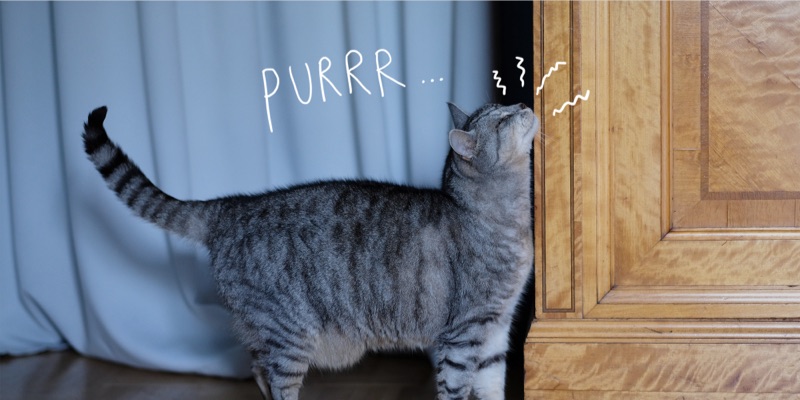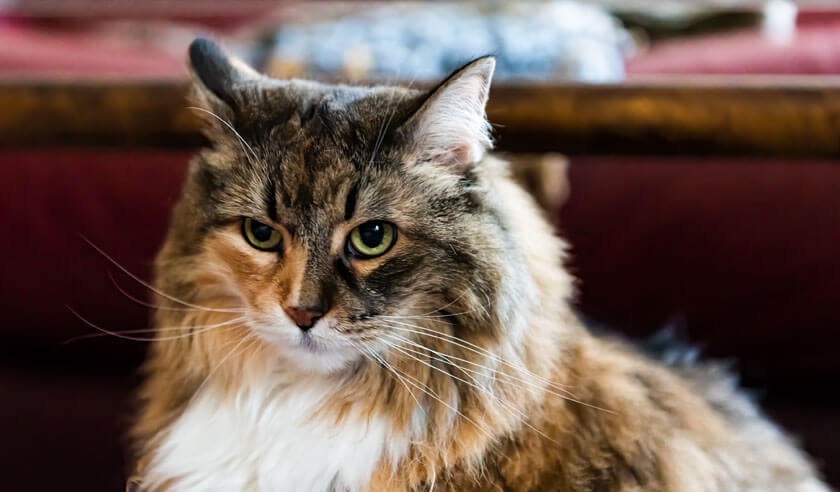You may think your cat's whiskers don't serve many purposes, but they're actually finely tuned tools used for a variety of tasks, like sensing where to bite prey and gauging the width of a passage. You may also think your cat only has whiskers around the mouth. Would you be surprised to find out they have whiskers above their eyes and on their legs, too? Let's learn more about your cat's whiskers.
What Are Cat Whiskers Made Of?
Cat whiskers, also called vibrissae, are fascinating. They're made from keratin (just like human hair) but they're much thicker. These hair follicles are full of nerve receptors and are very sensitive, which is why cats prefer to eat and drink from wide bowls where their whiskers aren't hitting the sides. Each whisker is attached to a muscle, allowing the cat to control its movement.
Where Do Cats Have Whiskers?
Your cat has various types of whiskers located in different areas:
- Muzzle
These include the mystacial whiskers on each side of the upper lip and the mandibular whiskers on the chin. - Above Each Eye
These are the superciliary whiskers. - On the Cheeks
Genal whiskers are toward the back of the cheeks, between the upper lip and eyes. - Back of the Front Legs at the Wrist
These hard-to-see whiskers are called carpal whiskers.
How Many Whiskers Do Cats Have?
Most cats have at least two whiskers over each eye. They have twelve on each side of the upper lip positioned in four lines. The other locations on the face and forelegs have a few whiskers each.
How Long Are Cat Whiskers?
Length varies by breed. Kittens are born with short whiskers that grow as they get older.
Why Do Cats Have Whiskers?
What are cat whiskers for, you ask? Cats use their whiskers for many things:
- Detecting Changes in Air Currents
As air bounces off objects near your cat, their whiskers vibrate. - Determining Whether They Can Fit Through an Opening
Your cat's whiskers are as wide as their body. If the whiskers touch the sides of an opening, it's a clue for your cat that they might need to find a different route. - Communication
Your cat can adjust the position of their whiskers in relation to how they're feeling. For example, a relaxed cat's whiskers are slightly curved with some distance between each one. Stressed cats may press their whiskers back against their face. A cat in pain or discomfort may straighten and shift their whiskers forward with less distance between each one. Your veterinarian may use the position of your cat's whiskers to help diagnose pain. - Protecting Their Face
Because the whiskers are so sensitive, they act as an alarm if anything is approaching your cat's face. - Fine-Tuning Their Hunting Skills
Cats can't see well within about one foot of their faces. The movement of prey against their whiskers helps them determine how to grab onto the prey and where to land an effective kill bite. - Orientation
Cats can determine which way is up by the way gravity pulls on certain whiskers. - Navigation
Cats can see well in low light. But they don't see well in heavy darkness. They use those sensitive whiskers to help them get around in the dark.
Can Cats Feel Pain in Their Whiskers?
The physical whisker itself can't generate pain since they have no nerve endings. However, the follicle is quite sensitive and can be overstimulated (this is called "whisker fatigue"). Pressure on the whiskers can make your cat uncomfortable and should be avoided. Narrow food and water bowls, confinement in very tight spaces, forceful petting of the face, and even mobility issues causing your cat to lie in the same position for long periods of time can cause whisker fatigue.
Do Cat Whiskers Grow Back?
A cat will shed their whiskers (you've probably even found a few lying around the house) — but it's usually just one or two at a time. As your cat loses a whisker here and there, it takes two to three months for a new whisker to replace it.
Should You Trim Your Cat's Whiskers?
Absolutely not. Whiskers won't overgrow and they don't need trimming. The only reason to trim whiskers would be at the direction of your veterinarian for medical issues.
Can Whisker Health Indicate Medical Issues?
Yes, it can. If you notice your cat's whiskers are shedding more than a couple at a time or breaking off, talk with your veterinarian. Parasites, skin conditions, allergies, chin acne, and abscesses are a few reasons your cat's whiskers may appear unhealthy or shed more than expected.
ZPC-02476






